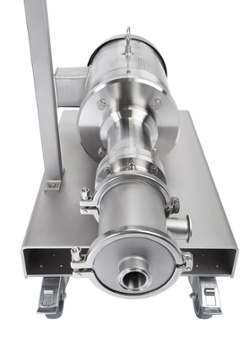How to manufacture yogurt
Greek-style yogurt is a very thick yogurt, typically 9 - 10% milk fat as opposed to the average yogurt which runs at 1 - 3.5% milk fat. The basic recipe for this product includes pasteurized homogenized milk, added protein/whey powder, starter bacteria, and flavorings. To achieve the proper viscosity, Greek-style yogurt is strained of the whey that has not coagulated. Stabilizers are commonly used to stop the separation but are not considered ‘all-natural ingredients. The customer wanted to produce an all-natural, Greek-style yogurt that was not as high in fat as traditional Greek-style yogurt and did not require straining to achieve the proper consistency.
Quadro Liquids Solution for yogurt manufacturing
To achieve the desired results, a Quadro Ytron® Z Emulsifier was employed. Cultured milk was passed through the tooling of the Z Emulsifier and was subject to a controlled amount of shearing required to smooth the curd. Prolonged mixing can be detrimental to coagulation so the short time the product resided in the Z Emulsifier encouraged better results. After passing through the Z Emulsifier, the thick curd was allowed to set in order to achieve its final viscosity and pH level. Flavorings were then added as required, and the product was sent to packaging.

Importance to Market
The Z Emulsifier produced a yogurt that required no straining and also, achieved a larger yield. An additional benefit of the Z Emulsifier is the elimination of the requirement for smoothing valves or filters to remove grits from the final product.
- Product enters housing axially
- One or more liquid phases and suspended particles are pumped through 1, 2 or 3 sets of toothed rotors/stators
- Controlled, high-intensity shear is delivered equally to all fluid elements, regardless of product characteristics
- Shear rate is constant, dependent only on rotor/ stator tooth selection and rotor tip speed.
Quadro Ytron® Z Inline Emulsifier Mixer Advantages
- Improved product quality and shelf-life stability
- Single-pass processing results in reduced batch times and repeatability batch-after-batch energy savings when compared with in-tank mixers, colloid mills and homogenizers
- Increased capacity when compared with colloid mills and homogenizers
- Multiple tooling configurations provide flexibility to process different products with the same machine
- Improved "sheen" and product texture.
Related Reading
Topics:
Emulsification

